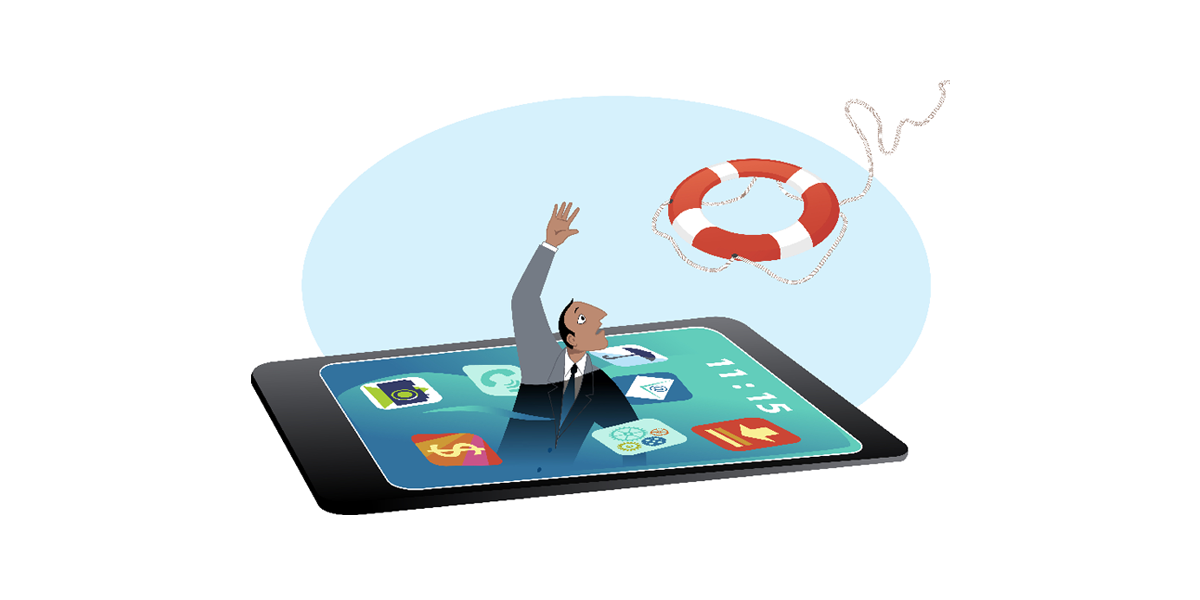We are caught in an endless cycle of messaging hell and the pattern is always the same. First, a new communication system is born — take email or Facebook, for example. Ease-of-use helps the product gain wide adoption and reach a critical mass of users. And then things turn ugly.
Some crafty entrepreneur figures out how to exploit the system and starts building a business around it. He reaches millions of people and opens the floodgates to countless others who seek to emulate his methods. Inevitably, the messaging channel is deluged with crap, clogging the pipes of what was once an efficient mode of communication — again, email or Facebook.
Notification Noise
The latest messaging onslaught is hitting the notification systems on our smartphones. Those little red badges hovering over our app icons and urgent graphics along the top of our screens incessantly remind us of some task that needs doing. They crowd out real priorities with bits of tiny triviality. Notification spam has many up in arms, but the flood of distractions continues.
This is the story repeated ever since telemarketers started ruining dinners across the land. It was not until federal legislation effectively put them out of business with the Do Not Call Registry did they stop their pestering.
Trending: Navy SEAL Secrets for High Performance Under Pressure
To date, platforms have been responsible for policing spammers on Facebook, Twitter, Android or Apple’s iOS. But keeping exploiters out is only half the challenge. The real problem is keeping the channels useful as they grow.
Exhibit A:
Exhibit B – A Google search for “I hate email” returns 586 million results, more than twice the results for “the Beatles.” Very scientific, I know, but you get the point.
The irony is that the more efficient the communication channel is, the more overcrowded it becomes. No one seems to like email and dozens, perhaps hundreds, of startups have tried to fix it. And yet no one has. Email is just too easy, and the easier something is to do, the more people do it. As a result, even companies that want to deliver valuable content must fight in vain for attention between emails from Nigerian heiresses and offers for cheap pharmaceuticals.
What Works?
There is a hierarchy for the kinds of messages we respond to. If you’re a company trying to get noticed, it is useful to know what gets people’s attention.
First, we respond to messages from our past selves. A calendar reminder set the day before is likely to be acted upon. An emailed “to do” from oneself is rarely ignored. Technology that can time-shift the delivery of information to when the user needs it most has massive potential.
Next time I’m shopping, tell me my body measurements. When I’m in the vicinity of doing a task, like dropping off that package at UPS, let me know there is a store nearby. When I’m about to meet a friend for lunch, remind me they bought last time so I can make sure to pick up the tab.
What Robert Scoble calls “contextual computing” and Om Malik calls “predictive computing,” will have the power to cut through the clutter as long as the messaging feels as though it was sent from the user to the user.
Next on the hierarchy, we respond to messages from close contacts. The need for social cohesion is a key motivator of our everyday lives, and we act upon authentic prompts from the people most important to us. The current messaging morass is in large part due to our obligation to respond to everything sent to us from people we know, even if the reply is the banal but obligatory “thanx” or “ttyl.”
Rise And Fall Of The Machines
Finally, the least effective method is messages from machines — the lowest use of technology-enabled communication. A call-to-action from a pre-filled auto-responder has the smallest chance of getting our attention because people learn to sniff out and avoid inauthenticity.
Marketing messages using various persuasion techniques come and go in a constant game of cat and mouse. Users learn quickly what’s real and what’s fake and they become more annoyed the more often they associate a company with a message they didn’t ask for. Pasting a friend’s name or face on a message may be effective for a while, but when users figure out what’s going on, they move on. Eventually, messages are deleted without being opened, lists get unsubscribed from, and apps are uninstalled.
Trending: Microsoft, Google, and Beyond: What Business at the Cutting-Edge of AI Looks Like
Cluttered communication channels, whether real-world post office boxes full of junk-mail or their digital equivalents, contribute to our collective frustration. In order to save apps from themselves and users from daily annoyances, companies must find ways to send useful notifications, or not to send them at all.
But companies now have an opportunity to provide the ultimate authentic messaging, namely information we choose to send ourselves. By shifting the delivery of the message to the most appropriate time and place, where it is most likely to be acted upon, new technologies will become indispensable solutions we can’t imagine living without.
A version of this post originally appeared on NirandFar.com, Nir Eyal‘s blog about the psychology of products. For more insights on using psychology to change customer behavior, join his free newsletter and receive a free workbook.






























